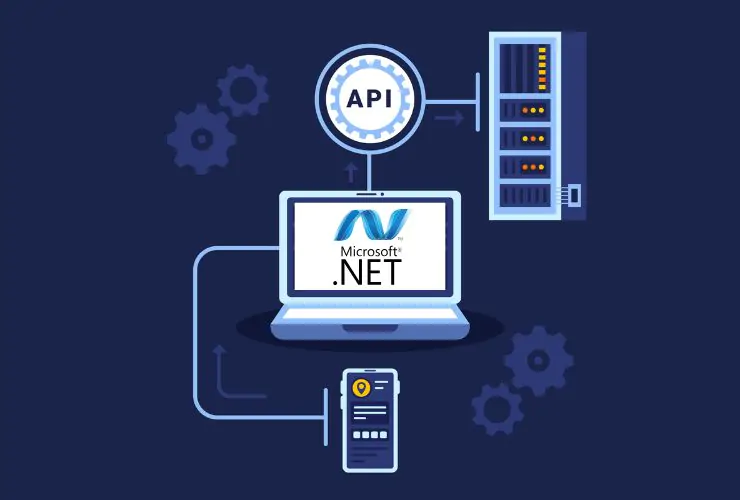In the modern digital world, web apps are often under immense pressure to perform quickly. Users are expecting rapid responses and high uptime, especially in eCommerce, dashboards, and APIs, and developers need ways to ensure that their solutions maintain speed without putting too much stress on their servers. Caching in ASP.NET Core provides a very elegant way for an application to deliver rapid, consistent performance while lowering pressure on databases and servers.
Caching is often regarded as a performance feature, but it is also a scalability feature. It is often gives developers peace of mind if traffic increases in the future, as targeted caching will make sure that the application can grow traffic while keeping the response time and user experience intact.
What is caching?
Caching is just storing regularly accessed data to temporarily store this data in a way that allows rapid retrieval and not repeatably and expensively perform an operation, such as performing queries against a database or calling out to a third-party API.
ASP.NET Core provides multiple options for caching that can fit in a variety of experiences. Developers can use in-memory caching, distributed caching, or response caching based on the application size, deployment setup, and type of data being served.
The Importance of Caching in ASP.NET Core
Having a good caching mechanism is useful for several reasons:
- Better performance: Cached data is served instantaneously, its always in memory, meaning you have a lower latency and less load on your database.
- Lower resource usage (CPU and Memory): Caching means that you are not collecting performance metrics more than once.
- Higher scalability: You can typically handle more concurrent requests.
- Better user experience: A better user experience means happier users and better retention.
Caching is important in modern web applications with dynamic content, in a scenario with many users, or in a distributed, cloud infrastructure.
Caching in ASP.NET Core
1. In-Memory Caching
Overview: In-memory caching stores data directly onto the server’s RAM, giving very fast access to the data. It is most useful for a small to medium application running on a single server.
Advantages:
- Very fast access retrieved data
- Easy to use
- Reduces repeated calls to your database
Disadvantages:
- Not suitable for multi-server or cloud deployment
- Data is lost on the server restart
Example: Use this to cache configuration data accessed repeatedly, small lookup tables, or temporary session information where you don’t need to persist user interactions.
2. Distributed Caching
Description: In distributed caching, data is stored in a centralized external store (like Redis or SQL Server), and is accessible across all instances of an application. It is useful in large scale or cloud-hosted applications where there are multiple servers or containers.
Benefits:
- Works across multiple servers and instances
- Very scalable
- Provides persistence, even if the server needs to be restarted.
Drawbacks:
- Slower than in-memory caching, because data must be retrieved via network calls
- Additional work to set up and maintain external cache stores.
Use Case: Caching things like user session data, product catalogs, or other shared data that cross multiple servers.
3. Response Caching
Description: In response caching, entire HTTP responses are cached in order so that repetitive requests for the same content do not require the request to be processed again.
Benefits:
- Reduces the load on the server
- Simple to set up
- Works great for static or semi-static content
Drawbacks:
- Not good for dynamic or frequently changing content
- Special care must be taken with dynamic API responses.
Use Case: Caching api results for publicly available data, product lists, pages with a content that changes infrequently, etc.
Best Practices for Caching in ASP.NET Core
When trying to get the most out of cache, keep the following best practices in mind:
- Use expirations judiciously: Don’t forget to implement sliding and absolute expire policies to ensure cached data is still relevant.
- Avoid caching sensitive data: You will want to ensure anything that is considered sensitive should not be cached, such as tokens and personal data.
- Invalidate caches when needed: Update or remove cache when the data it relates to changes to avoid stale data.
- Monitor cache uptime: Measure cache metadata cache performance hit and miss ratio over time to track performance effectiveness.
- Use a combination of caching strategies: Use a combination of in-memory caching, distributed caching, and response caching for best speed and scalability.
- Use cloud-specific features: You can augment caching with managed cache services and content delivery networks (CDN) to greatly enhance performance for global applications.
Caching in Cloud Environments
For any applications running in the cloud environment, utilizing any distributed caching capabilities are necessary. Caching Services from Azure Cache for Redis or Amazon ElastiCache will allow applications to handle increased traffic without sacrificing performance. Also, caching is great for accelerating content delivery times when combined with content delivery networks (CDN) that delivers files to cached application endpoints, which will also improve user experience.
With the proper configuration of connection resiliency, retry logic, and monitoring, caching within a cloud can be dependable and relies for when under heavy load or when issues arise with transient network connections.
Conclusion
Caching is a cornerstone of high-performance, scalable web applications in ASP.NET Core. By intelligently applying in-memory, distributed, and response caching strategies, developers can significantly reduce server load, improve response times, and handle higher traffic without compromising application reliability.
Incorporating caching into your ASP.NET Core applications is not just a performance optimization—it’s a strategic investment in scalability and user satisfaction, making it an essential practice for modern web development.






